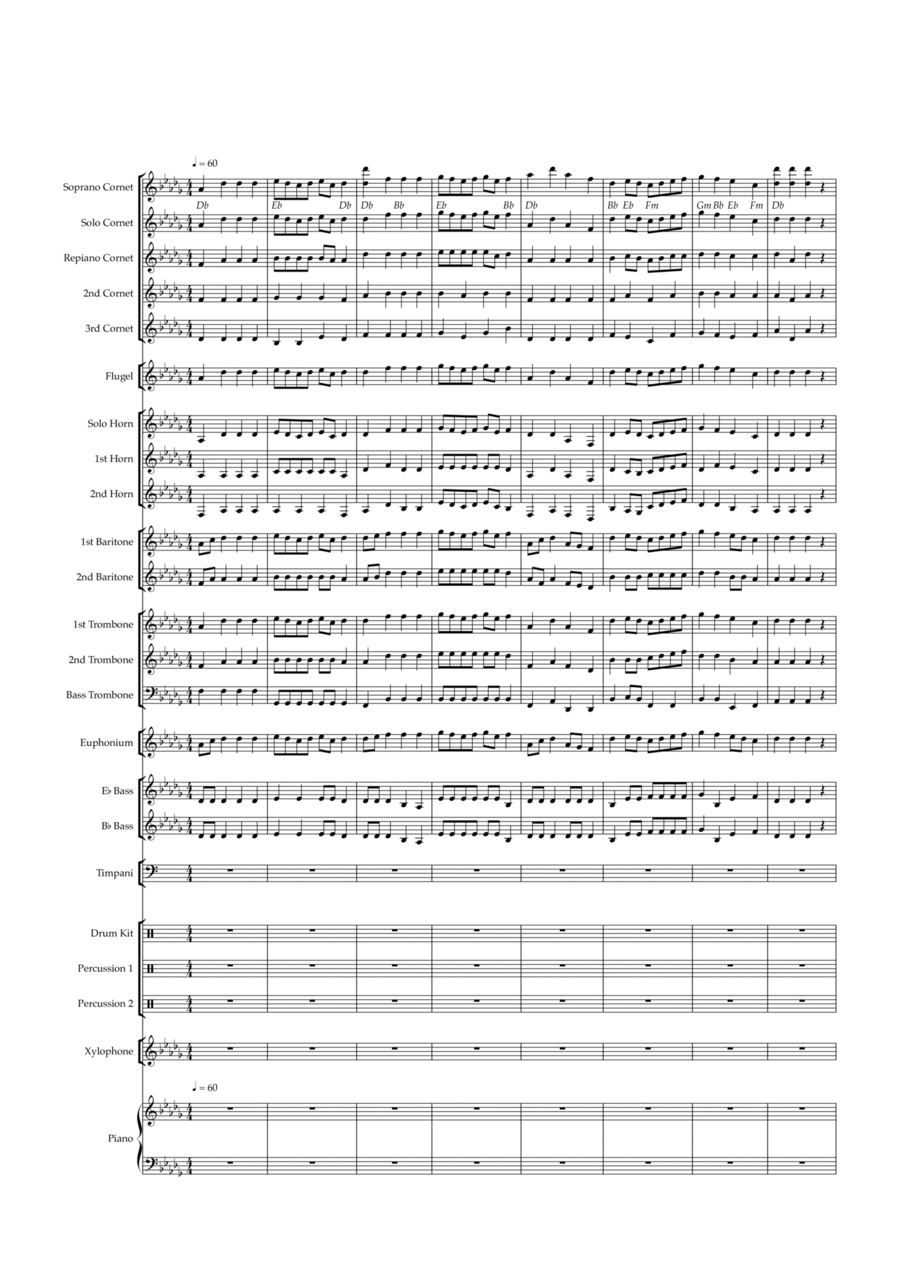Mixed Percussion B-Flat Tuba,B-Flat trombone,Baritone Horn TC/Euphonium,Bass Trombone,E-Flat Cornet,E-Flat Tenor Horn,E-Flat Tuba TC,Flugelhorn,Percussion 1,Percussion 2,Tenor Trombone - Level 3 - Digital Download SKU: A0.1254186 Composed by Joe Strachan. 21st Century,Blues,Classical,Jazz,Traditional. Brass Band. 37 pages. Joseph Strachan #847781. Published by Joseph Strachan (A0.1254186). I intend to compose using the structure of theme and variations, scored for a brass band which consists of an Eb Soprano cornet, Bb cornets, Flugelhorn, Eb Tenor horns, Bb Baritones, Tenor Trombones, Bass trombone, Bb Euphonium, Bb Tuba, Eb tuba and percussion. I intend to convey multiple moods and brass band techniques throughout my piece by creating blended harmony, jazzy rhythm, and modulation. With the theme, I intend to make the band blend in harmony with the music. Into the first variation to create different rhythms and to create a jazz mood. To create the theme, I intend to establish the key of Db major in 4/4 time with a homophonic texture. For Example, to establish the key of Db in bb.1-8. I intend to use the primary and secondary chords Db, Eb, Db, Bb, Eb, Bb, Db, Bb, Eb, Fm, Gm, Bb, Eb, Fm, Ab, Db. To strengthen the chords, I use the root note in the bass lines (e.g. Bb bass).  With creating the theme I also take into consideration having a structured flowing catchy melody to show the audience a clear statement that this is the theme. The Rhymtic features in the theme are crotchets and quavers. But which are soon to be embellished in the variations. The dynamic in the theme is mf (mezzo-forte)  and mp (mezzo-piano)  in the higher instruments.  And forte in the lower voices for balancing. The tempo marking is crotchet equals 60 beats per minute. In variation 1, I intend to maintain the original melody from the theme (solo cornet)  whole creating contrast with the inclusion of jazz-styled rhythms and dissonant chords. For example, I use a jazz-styled drum ostinato (bb. 9-61) Featuring dotted quavers and semiquavers. In addition to this, I feature dissonance with the use of 7th chords which can be seen at bb.18-26, 31-39, and bars  54-62 For example, in bars 18-26 the cornets are playing the melody in a four-part harmony only using 7th chords. The rhythmic features are more embellished using crotchets and quavers. But also using dotted quavers and semiquavers to show that this melody this a variation. The dynamics in the variation are extended with more instruments having a forte dynamic to have a strong expressive dynamic. Inspiration of this variation comes from people like (Maynard Ferguson, and Gordon Goodwin).
